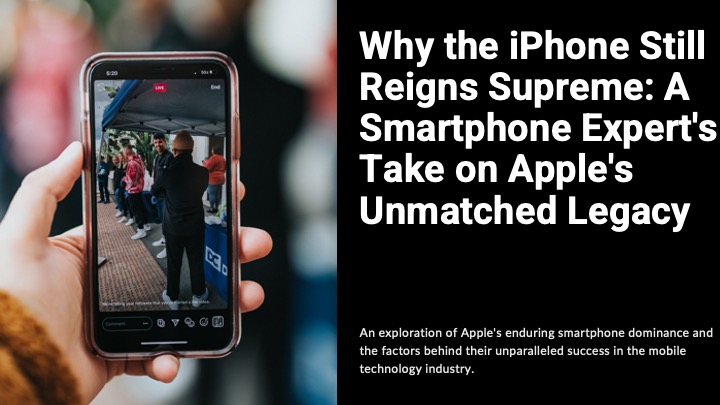The global smartphone market faced its most challenging year in recent history, with shipments falling for the fourth consecutive quarter in Q4 2022. Canalys’ latest research revealed that vendors shipped fewer than 1.2 billion smartphones in 2022, representing a 12% decline year-on-year. The Q4 2022 numbers painted an even bleaker picture, with shipments dropping 18% to just 296.9 million units. Despite this, the top five vendors remained consistent: Samsung, Apple, Xiaomi, Oppo, and Vivo.
Market Trends and Vendor Performance
Samsung Holds the Top Spot Despite Declines
Samsung maintained its position as the global leader, shipping 257.9 million smartphones in 2022, a 6% decline from 2021. With a 22% market share, the company’s performance was supported by its premium Galaxy S series and the continued popularity of the Galaxy A series in mid-range and budget segments. Samsung’s strategy of focusing on profitability through its high-end portfolio, including the foldable Galaxy Z series, helped offset some of the challenges.
Apple’s Resilience Amid Supply Chain Woes
Apple secured second place, shipping 232.2 million units in 2022, marking a 1% growth year-on-year. The company’s premium iPhone 14 Pro and Pro Max models contributed significantly, with features like the Always-On display and Photonic Engine appealing to loyal customers. However, Apple’s Q4 shipments fell 11% due to COVID-19-related manufacturing disruptions in China and weakened consumer demand. Le Xuan Chiew, Research Analyst at Canalys, highlighted Apple’s efforts to diversify production and mitigate supply chain risks moving forward.
Chinese Vendors Face Severe Challenges
Xiaomi, Oppo, and Vivo struggled in 2022, experiencing significant declines due to intense competition in their home market and international headwinds. Xiaomi shipped 152.7 million units, a 20% drop from 2021, while Oppo and Vivo recorded declines of 22% each, shipping 113.4 million and 101.9 million units, respectively. Analysts pointed to channel inventory issues and economic distress in key markets as major factors impacting these brands.
The Smartphone Landscape in Australia
In Australia, the slowdown in global shipments echoed in local markets, with consumers showing increased caution in upgrading their devices. However, premium models like the iPhone 14 Pro and Samsung Galaxy S22 Ultra remained popular among tech enthusiasts, while budget options such as the Motorola Moto E32 and OPPO A16s gained traction among cost-conscious buyers.
Notable Smartphone Releases in 2022
Premium Smartphones:
- Samsung Galaxy S22 Ultra ($1,849): Exynos 2200 / Snapdragon 8 Gen 1, 8GB/12GB RAM, 6.8-inch Dynamic AMOLED 2X display, 120Hz adaptive refresh rate, Quad rear cameras (108MP wide, 10MP telephoto, 10MP periscope telephoto, 12MP ultrawide), 40MP front camera, S Pen integrated, 100x Space Zoom, improved Night mode.
- Apple iPhone 14 Pro ($1,749): Apple A16 Bionic chip, 6GB RAM, 6.1-inch Super Retina XDR display with ProMotion (120Hz adaptive refresh rate), Triple 48MP rear cameras (wide, telephoto, ultrawide), 12MP TrueDepth front camera with autofocus, Photonic Engine, Always-On display.
- Apple iPhone 14 Pro Max ($1,899): Apple A16 Bionic chip, 6GB RAM, 6.7-inch Super Retina XDR display with ProMotion (120Hz adaptive refresh rate), Triple 48MP rear cameras, 12MP TrueDepth front camera, Always-On display.
- Google Pixel 7 Pro ($1,299): Google Tensor G2, 12GB RAM, 6.7-inch LTPO OLED display, 120Hz adaptive refresh rate, Triple rear cameras (50MP wide, 48MP telephoto with 5x optical zoom, 12MP ultrawide), 10.8MP front camera, Super Res Zoom up to 30x, Photo Unblur, Cinematic Blur.
- OnePlus 10 Pro ($1,199): Qualcomm Snapdragon 8 Gen 1, 8GB/12GB RAM, 6.7-inch LTPO2 Fluid AMOLED display, 120Hz adaptive refresh rate, Triple rear cameras (48MP main, 50MP ultrawide, 8MP telephoto), 32MP front camera, Hasselblad Camera for Mobile, 80W SuperVOOC charging.
Mid-Range Smartphones:
- Samsung Galaxy A53 5G ($699): Exynos 1280, 6GB/8GB RAM, 6.5-inch Super AMOLED display, 120Hz refresh rate, Quad 64MP/12MP/5MP/5MP rear cameras, 32MP front camera, OIS on main camera, IP67 water resistance.
- Nothing Phone (1) ($749): Qualcomm Snapdragon 778G+, 8GB/12GB RAM, 6.55-inch OLED display, 120Hz adaptive refresh rate, Dual 50MP rear cameras, 16MP front camera, Glyph Interface, transparent design, Nothing OS.
- iPhone SE (3rd Gen) ($719): Apple A15 Bionic chip, 4GB RAM, 4.7-inch Retina HD display, 12MP rear camera, 7MP front camera, 5G connectivity, compact design.
Budget Smartphones:
- Motorola Moto E32 ($249): MediaTek Helio G37, 4GB RAM, 6.5-inch IPS LCD with 90Hz refresh rate, Triple 50MP/2MP/2MP rear cameras, 8MP front camera, affordable price.
- Nokia G21 ($279): Unisoc T606, 4GB RAM, 6.5-inch IPS LCD with 90Hz refresh rate, Triple 50MP/2MP/2MP rear cameras, 8MP front camera, long battery life.
- OPPO A16s ($219): MediaTek Helio G35, 4GB RAM, 6.52-inch IPS LCD, Triple 13MP/2MP/2MP rear cameras, 8MP front camera, large battery.
Outlook for 2023
The smartphone market faces an uncertain road ahead as global economic conditions continue to exert pressure on consumer spending. However, as supply chain constraints ease and 5G adoption accelerates, vendors have an opportunity to innovate and capture new market segments. Brands with strong ecosystems and differentiated offerings, like Apple and Samsung, are better positioned to weather the challenges and drive growth in 2023.



